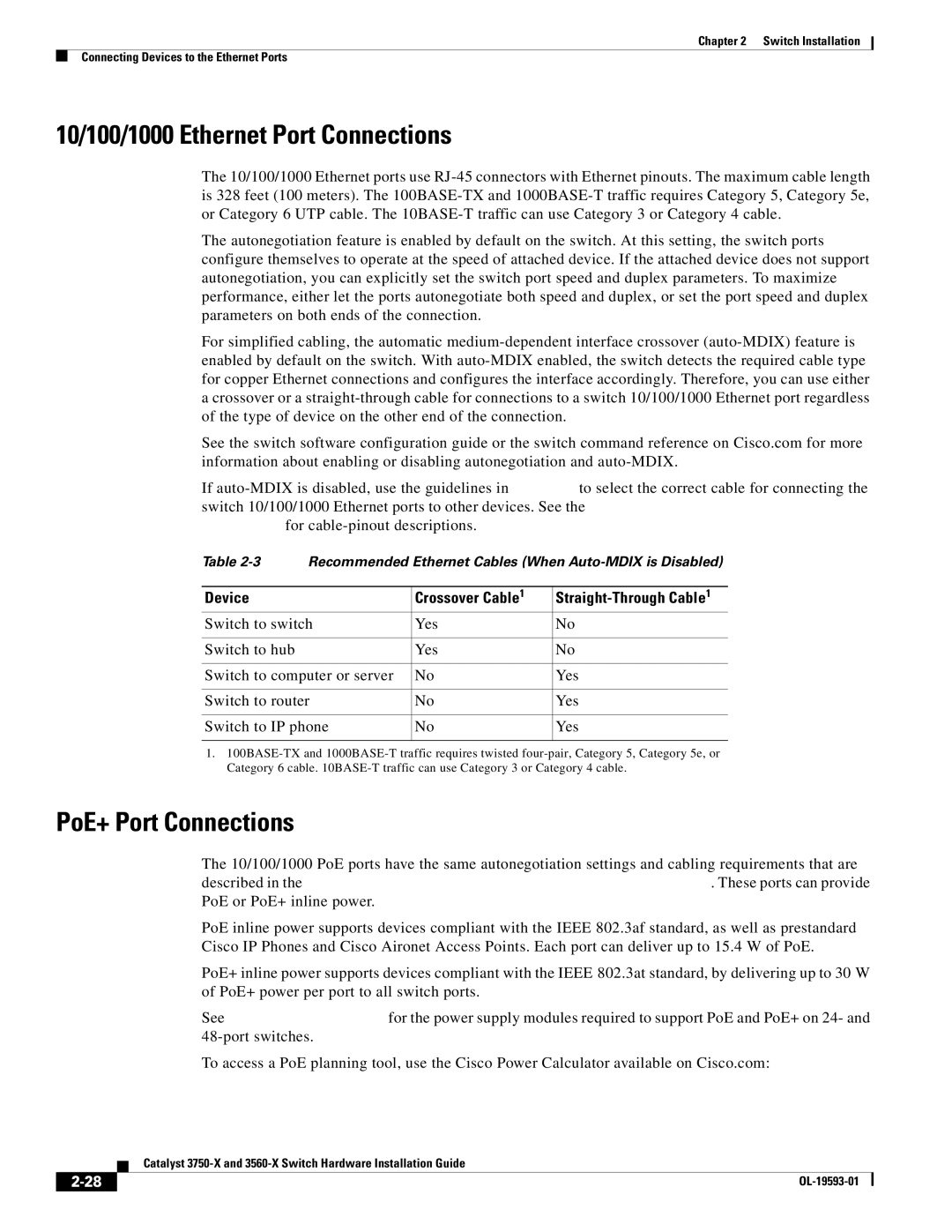
Chapter 2 Switch Installation
Connecting Devices to the Ethernet Ports
10/100/1000 Ethernet Port Connections
The 10/100/1000 Ethernet ports use
The autonegotiation feature is enabled by default on the switch. At this setting, the switch ports configure themselves to operate at the speed of attached device. If the attached device does not support autonegotiation, you can explicitly set the switch port speed and duplex parameters. To maximize performance, either let the ports autonegotiate both speed and duplex, or set the port speed and duplex parameters on both ends of the connection.
For simplified cabling, the automatic
See the switch software configuration guide or the switch command reference on Cisco.com for more information about enabling or disabling autonegotiation and
If
Table | Recommended Ethernet Cables (When | ||
|
|
|
|
Device |
| Crossover Cable1 | |
Switch to switch | Yes | No | |
|
|
|
|
Switch to hub |
| Yes | No |
|
|
| |
Switch to computer or server | No | Yes | |
|
|
| |
Switch to router | No | Yes | |
|
|
| |
Switch to IP phone | No | Yes | |
|
|
|
|
1.
PoE+ Port Connections
The 10/100/1000 PoE ports have the same autonegotiation settings and cabling requirements that are described in the “10/100/1000 Ethernet Port Connections” section on page
PoE inline power supports devices compliant with the IEEE 802.3af standard, as well as prestandard Cisco IP Phones and Cisco Aironet Access Points. Each port can deliver up to 15.4 W of PoE.
PoE+ inline power supports devices compliant with the IEEE 802.3at standard, by delivering up to 30 W of PoE+ power per port to all switch ports.
See Table
To access a PoE planning tool, use the Cisco Power Calculator available on Cisco.com:
http://tools.cisco.com/cpc/launch.jsp
| Catalyst |
